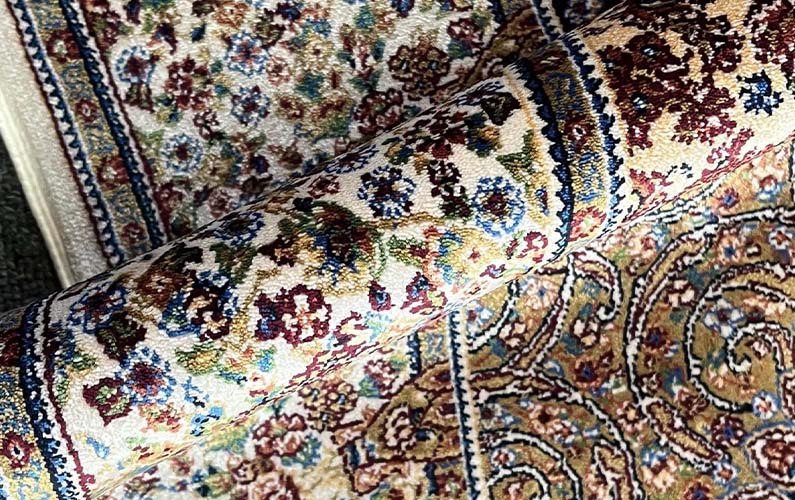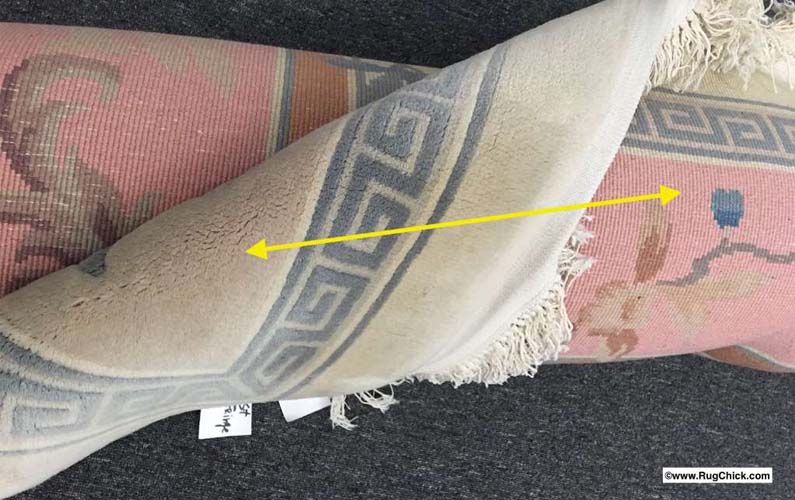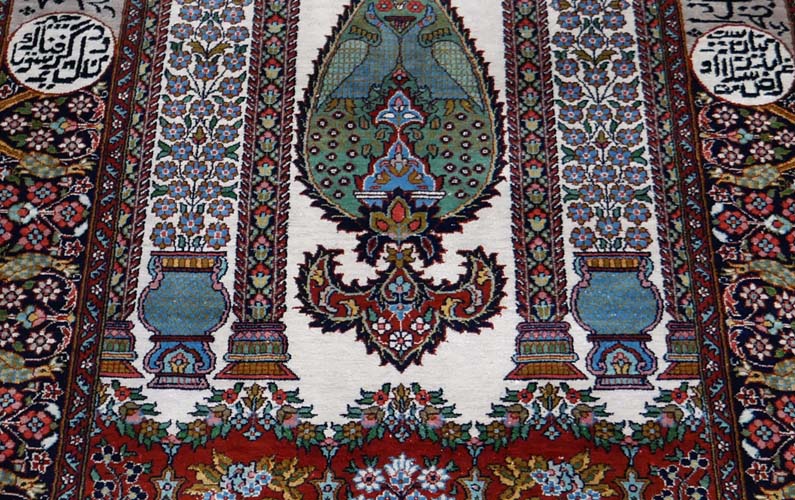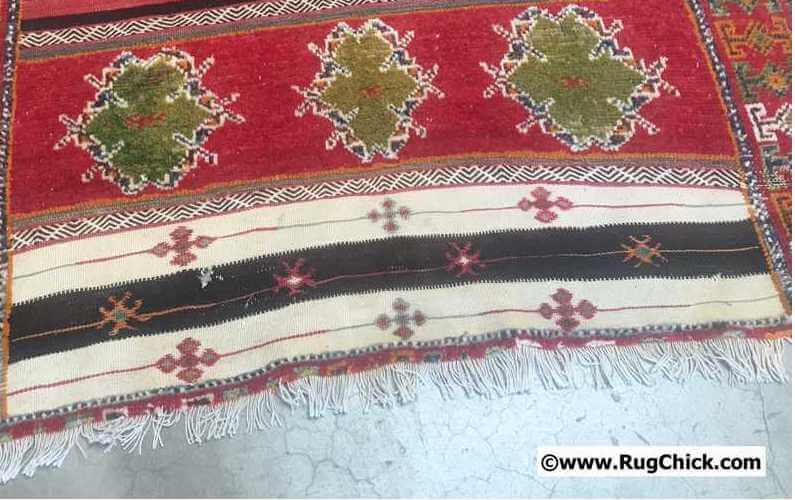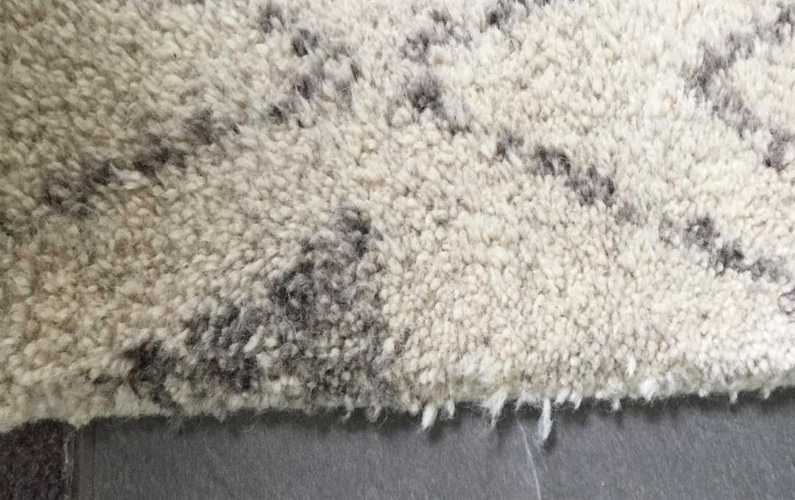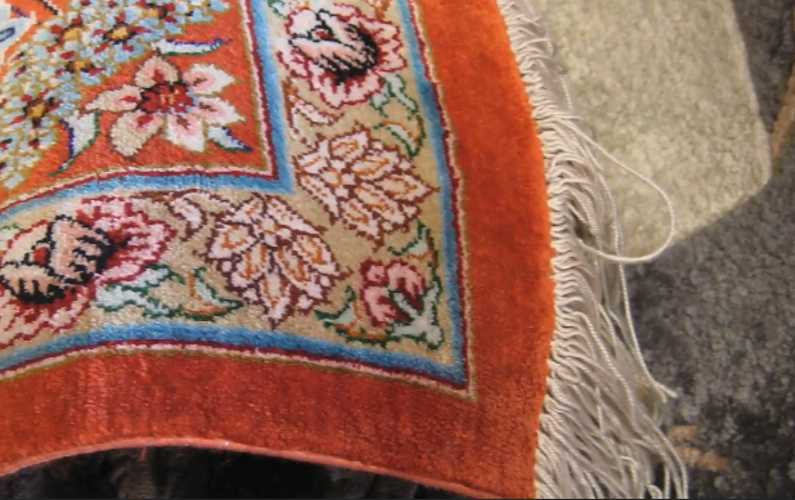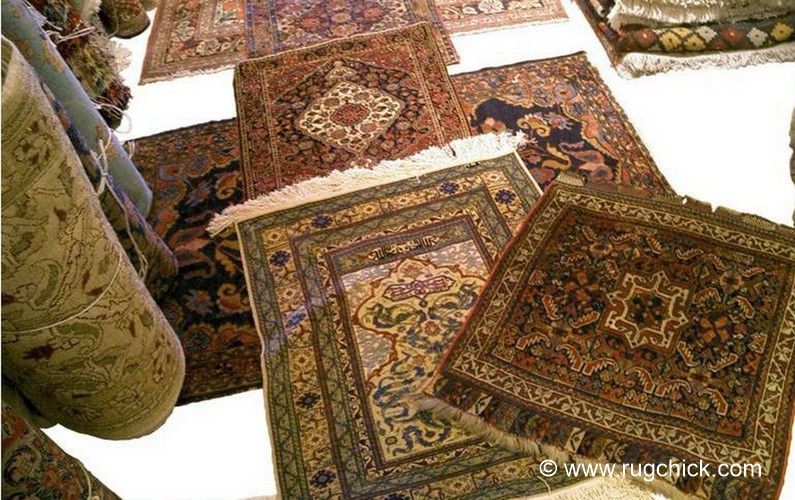Repair Your Rug Right.
The most common repair needed by rugs in our town (and EVERY town with rug owners) is END repairs.
With hand woven rugs, when the fringe is torn or worn, the knots of the rug start to slide away and off.
You rug starts slowly shrinking, and gets shorter and shorter. Like this:
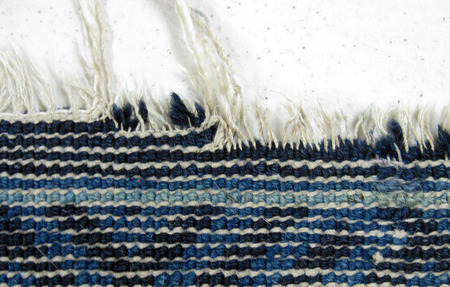
This end is unraveling and losing its wool knots (back side view).
Once a knot has pulled loose, you cannot resecure it… it is lost FOREVER.
That’s why when your fringe gets VERY short, you need to pay attention.
The value of your rug is in those tiny little knots. You want to keep them in tact. But sometimes when you try to do good and grab some wool and thread, you might actually cause more damage than good.

Fringe is too short on this rug, this repair won’t hold.
This rug has fringe that is way too short, and you can see someone’s attempt to tie off the tassels is actually sliding off, and pulling some knots with it. Too little too late.
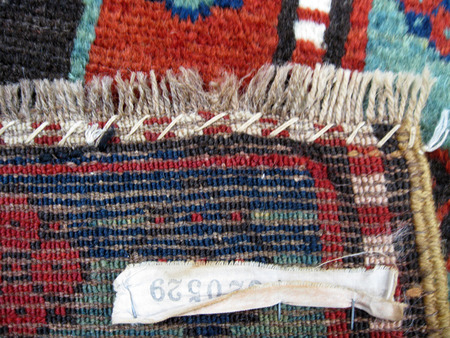
An attempt at darning the edge is doing nothing to secure this rug.
Another attempt at trying to use a whip stitch to darn this end is doing no good either. By pulling that thick wool through the foundation to try to hold the edge together, the person has actually loosened those rows of knots and this edge will pull apart sooner as a result.
Good intentions, bad results.
Sometimes you take your rug to someone who decides that using an industrial serging machine to machine repair the edge is a good option. This also is a very BAD choice.

Do not machine repair a hand woven rug. It damages the rug, and it’s ugly.
This is heartbreaking… a sewing machine happy idiot decided to machine repair a hand woven rug. Not only is the color choice ugly, but this type of machine work causes structural damage to the rug that cannot be reversed.
The reason hand woven rugs are repaired by hand is so that the Rug Repair Specialist can slip the needle around, and inbetween the foundation fibers (warps and wefts).
A serging machine does not go around fibers – it powers right through them, over and over and over again.
Over time these repairs will tear away, and pull away inches of the rug that could have been saved if it had been repaired by hand.
If you are talking about an investment textile, the more inches you lose, the more value you lose. Simple as that.
When this machine repair tears away, the rug will need to be reduced further to provide enough warp length to anchor a solid repair with. (Remember those VERY short fringe tassel stubs up top in photo #2? You need more length than that to hold a good end repair in place.)
What does a good end repair look like? There are several styles, but this is my favorite – an overcast stitch:
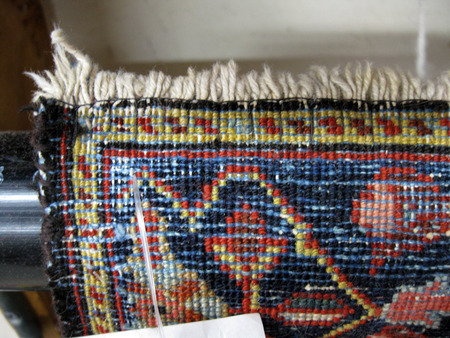
Properly executed end repair overcast stitch. Strong and long lasting.
Your stitch should use a strong upholstery thread that will not get brittle over time. Your stitch should vary now and then to lower weft threads so that the tension of the stitch is evenly distributed so it will not unnecessarily pull the edge loose. Your buttonhole stitch, flat along the top, should be close to the outermost weft thread to hold the edge tightly in place.
Many rug repair facilities, like ours, guarantee their overcast repairs for the life of the rug. This is because, when it is done properly, it should never need to be done again.
Now… if your vacuum cleaner sucks up and tears off the edge, that is a different matter. There are no guarantees to help someone not paying attention. 🙂
If you have a hand woven rug, and the edge is unraveling, make sure the repair is done by hand.
If you have a rug cleaning facility, and want to know some rug repairs that you can do without having to be trained by a rug repair specialist, be sure to opt-in for the Simple Rug Repairs Report I’ve made available. The opt-in box is at the top of this blog, over to the right. Enjoy!
– Lisa

